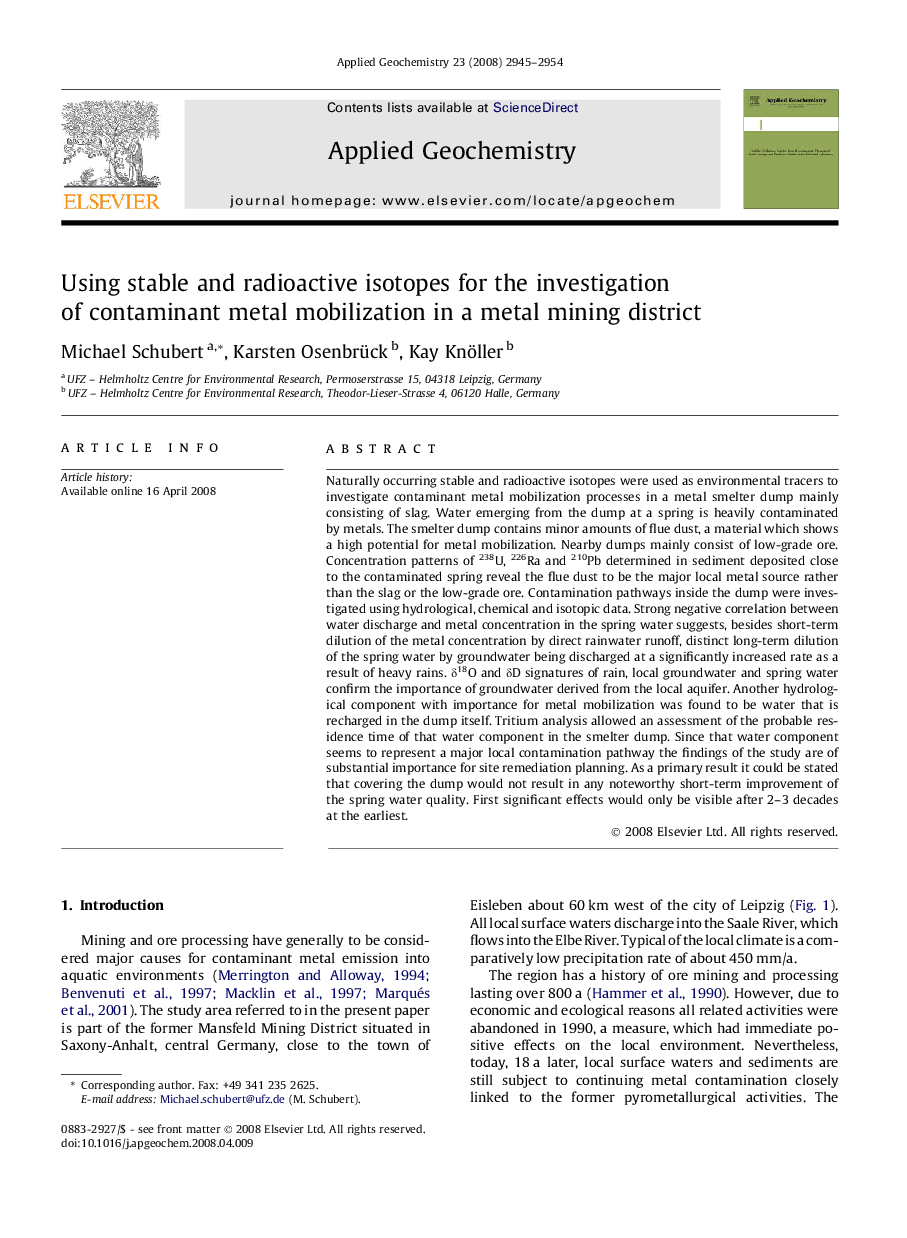| کد مقاله | کد نشریه | سال انتشار | مقاله انگلیسی | نسخه تمام متن |
|---|---|---|---|---|
| 4437210 | 1310715 | 2008 | 10 صفحه PDF | دانلود رایگان |

Naturally occurring stable and radioactive isotopes were used as environmental tracers to investigate contaminant metal mobilization processes in a metal smelter dump mainly consisting of slag. Water emerging from the dump at a spring is heavily contaminated by metals. The smelter dump contains minor amounts of flue dust, a material which shows a high potential for metal mobilization. Nearby dumps mainly consist of low-grade ore. Concentration patterns of 238U, 226Ra and 210Pb determined in sediment deposited close to the contaminated spring reveal the flue dust to be the major local metal source rather than the slag or the low-grade ore. Contamination pathways inside the dump were investigated using hydrological, chemical and isotopic data. Strong negative correlation between water discharge and metal concentration in the spring water suggests, besides short-term dilution of the metal concentration by direct rainwater runoff, distinct long-term dilution of the spring water by groundwater being discharged at a significantly increased rate as a result of heavy rains. δ18O and δD signatures of rain, local groundwater and spring water confirm the importance of groundwater derived from the local aquifer. Another hydrological component with importance for metal mobilization was found to be water that is recharged in the dump itself. Tritium analysis allowed an assessment of the probable residence time of that water component in the smelter dump. Since that water component seems to represent a major local contamination pathway the findings of the study are of substantial importance for site remediation planning. As a primary result it could be stated that covering the dump would not result in any noteworthy short-term improvement of the spring water quality. First significant effects would only be visible after 2–3 decades at the earliest.
Journal: Applied Geochemistry - Volume 23, Issue 10, October 2008, Pages 2945–2954